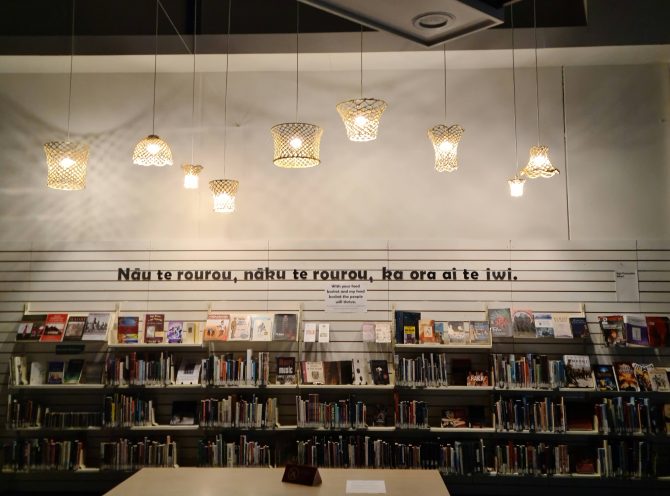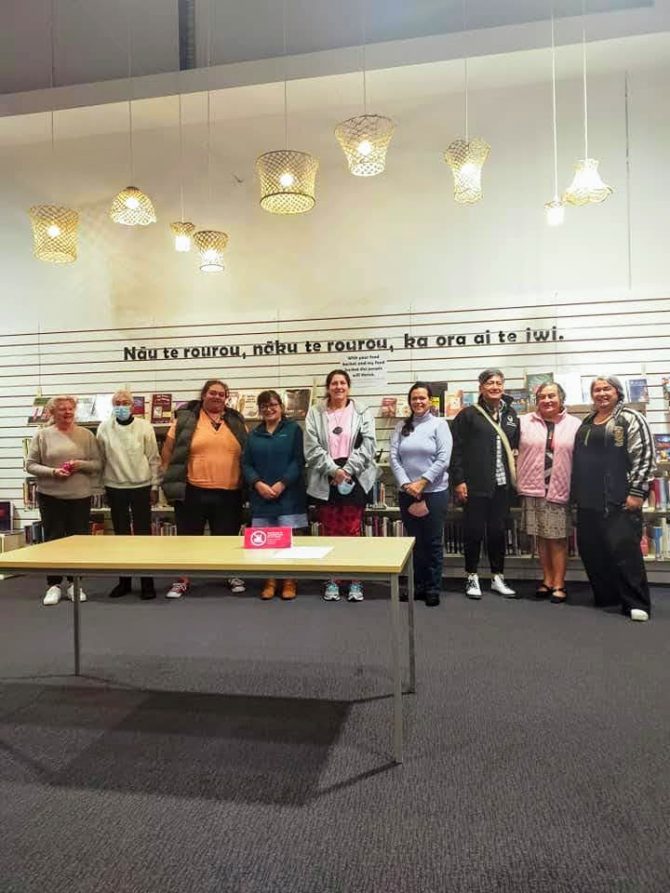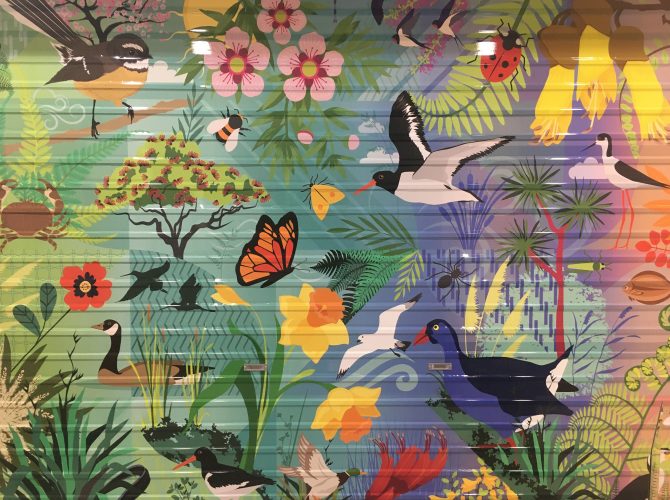Ngā hua a Matariki – The fruits of Matariki (weaving installation)
Ngā Hua a Matariki – the fruits of Matariki was created by over 20 weavers from Ōtautahi Weavers, a group of experienced Christchurch based Māori weavers led by Paula Rigby-Hira, current Chair of Te Whatu Rāranga o Aotearoa | National Māori Weavers committee.
Nine separate pieces form the installation created from specially prepared Harakeke, New Zealand flax or Phormium tenax, woven around different sized and shaped old style lamp shades. The completed artwork is then individually suspended from the roof and have working soft glow light bulbs in each to highlight their weave, shape, beauty while representing the new stars of Taramainuku.
The style of weaving is whakapūareare, which is also known as a refined kupenga (fishing net) style. The style of weaving was chosen to allude to Te Iwa o Matariki – the nine stars of Matariki which sit at the front of Te Waka o Raki, a celestial waka captained by Taramainuku who gathers each night the wairua (spirits) of those who have passed that day in his great kupenga (net). It is believed that these wairua eventually become stars in the night sky when Matariki rises each year and Taramainuku opens his net releasing the new stars (represented by the soft glow bulbs) into the care of Pōhutukawa, a star within the Matariki star cluster.
The installation name is also a reminder that Matariki is an environmental indicator that is still used by Māori to predict the growing, fishing, hunting and weather patterns for the coming year. This is becoming more difficult to predict each year with climate change and the degradation of our environment. Thus it is a reminder of the importance of caring for our environment.
The old style lamp shades were chosen both for their unique styles and sizes but more importantly, the easy framework to use when learning a new technique such as whakapūareare.
“For a lot of our Ōtautahi Weavers this was a new technique they were learning, thus [using the lamp shades] created a really easy project that was fun to do and I personally think the artwork is stunning” says Rigby-Hira.
The project was initiated by then Manager of Māori Library Services, Aurelia Arona who approached Paula and the Ōtautahi Weavers to see if they would do a Community piece for Te Kete Wānaka o Ihutai Linwood Library. It took just over two months to plan, prepare and create the installation, including a day where the weavers wove on site at the Library so the community and staff could watch the process.
Ngā Hua a Matariki was installed and blessed in May 2022 just before the setting of Matariki for that year. Paula and many of the weavers joined, members of Māori Library Services, Linwood Library Staff for the first official ‘switch on’ of the installation on Friday 13 May 2022.
Ōtautahi Weavers wish to thank the Christchurch City Council Art Installation fund, Aurelia Arona and Māia Abraham, Māori Library Services Managers (past and present), Sam Depree-Ludemann, Team Leader Linwood Library and his Team and Sue Moore CCC Facilities Management for their manaaki, tautoko and aroha of this kaupapa.
Listen
Maatakiwi interviews Paula Rigby about this project, (13 min, 11 sec)
Te kaipukahu a Te Ihuatai – The abundance of Ihutai (door skin)
The roller door skin at Linwood Library depicts the abundance of flora (plant), fauna (animal) and birdlife once found in the Ihutai (Linwood/Bromley) area.
Traditionally, Ihutai is the name given to the estuary where the Ōtākaro (Avon) and Ōpāwaho (Heathcote River) meet and go out to sea. The estuary itself was the gateway to the vast comprehensive network of wetlands that once extended throughout Waitaha (the Canterbury region).
Degradation of the waterways and land from human occupation have led to the loss of many species. However work by Iwi, community groups and Council has seen a regeneration of the waterways and a return of fish species and birdlife.
Thus the true meaning of Te kaipukahu a Te Ihutai is the collective community aspiration for the return of this abundance again.
This artwork was installed in April 2023.





